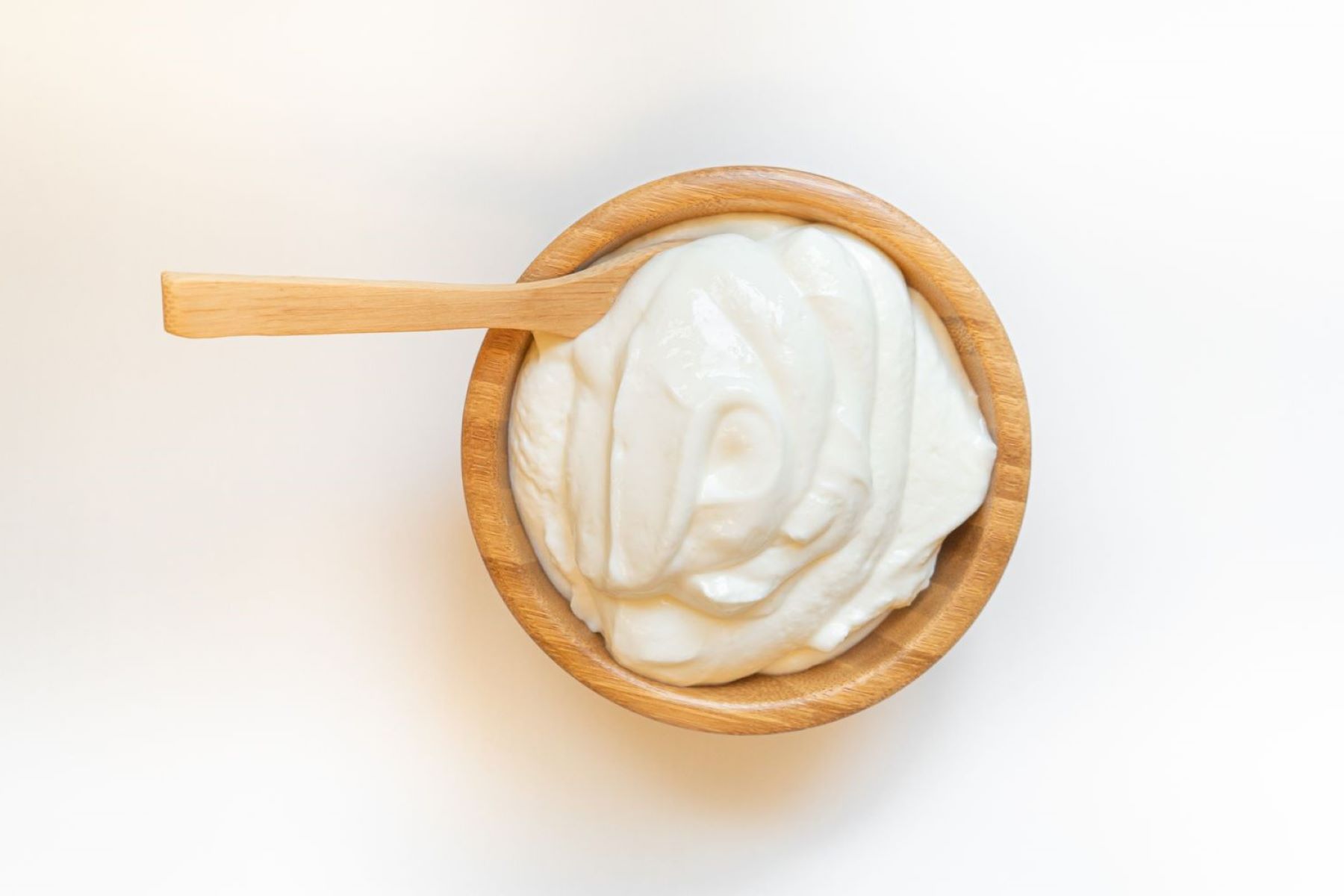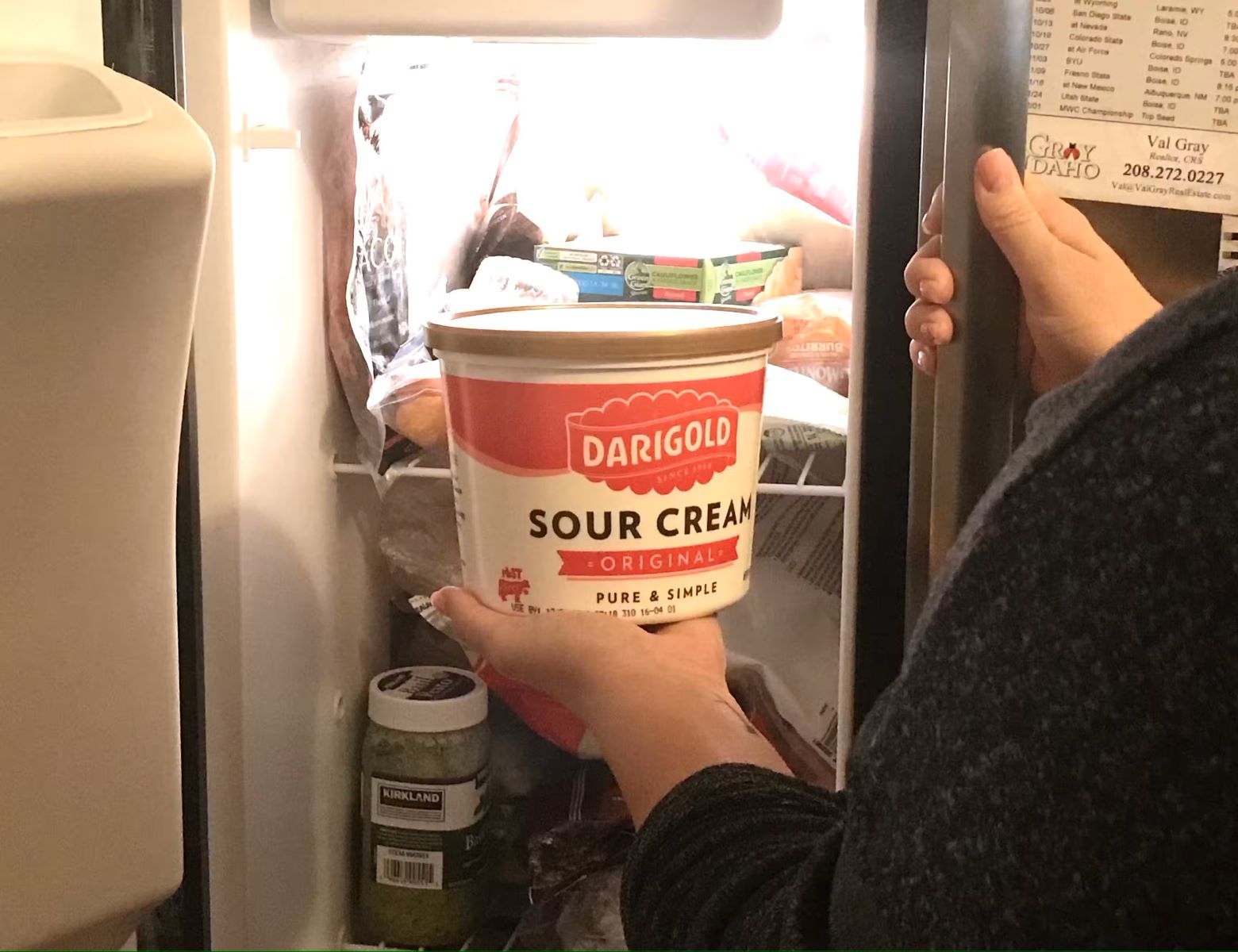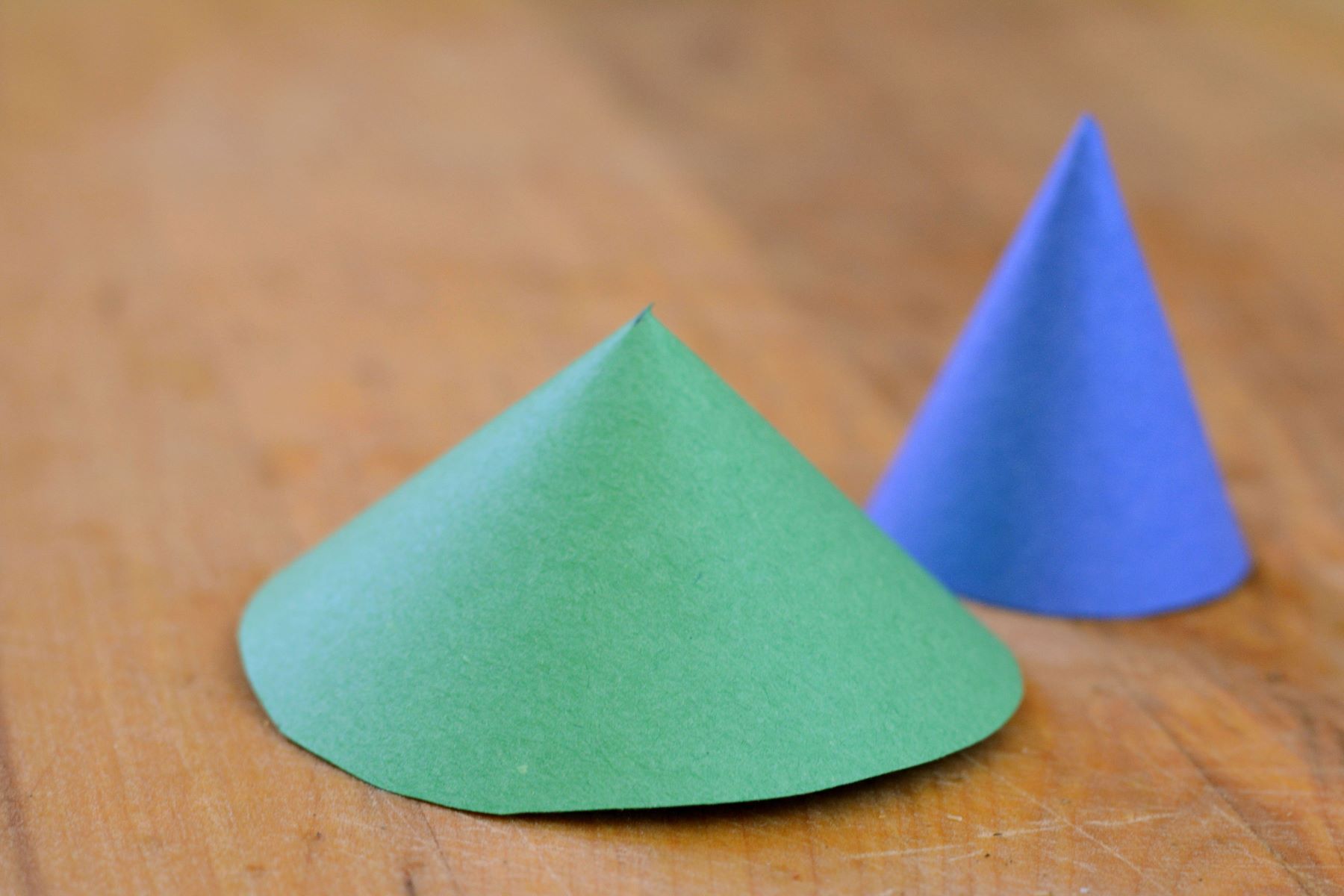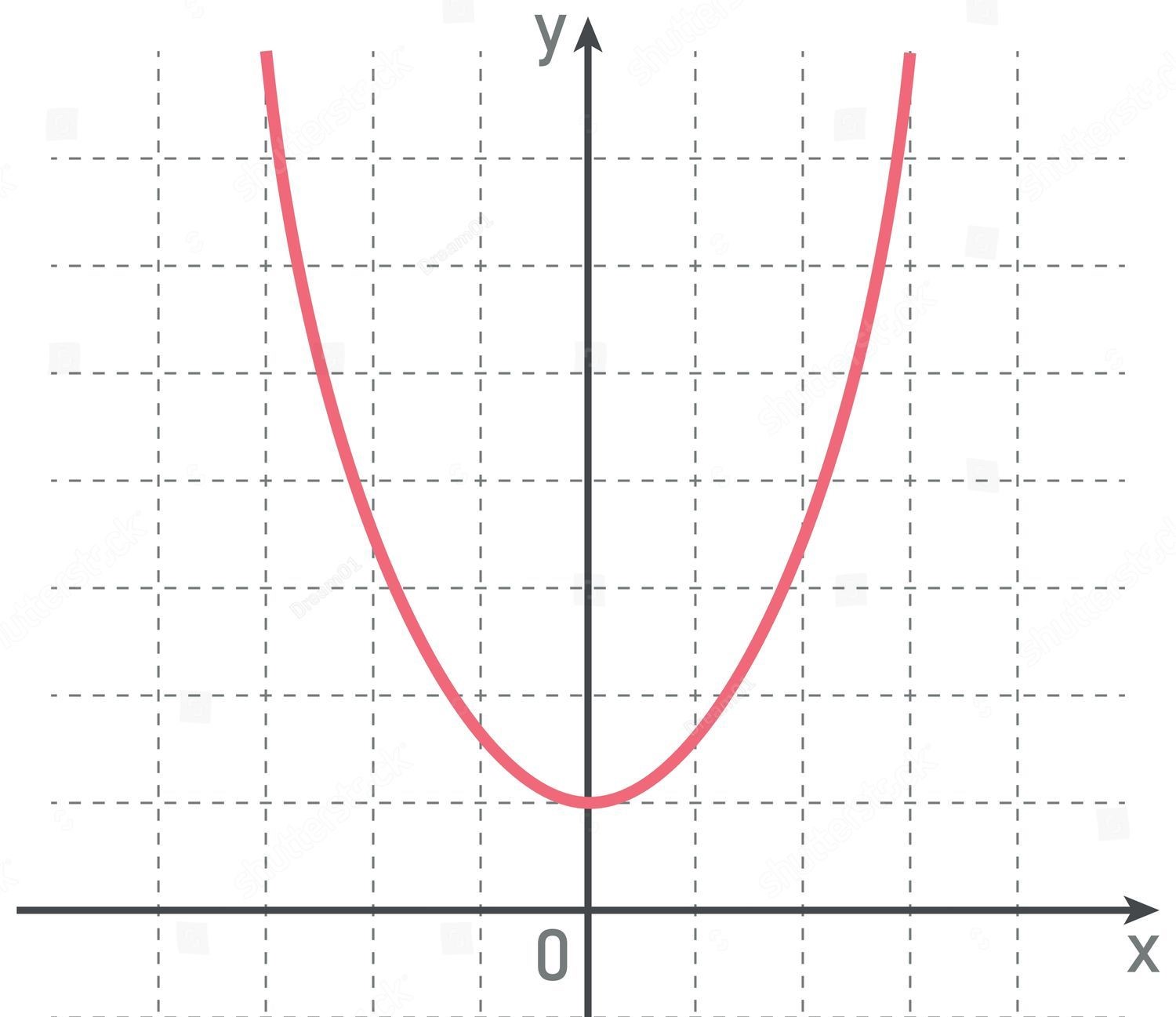Home>Food and Cooking>How To Determine The Shelf Life Of Sour Cream After The Best By Date


Food and Cooking
How To Determine The Shelf Life Of Sour Cream After The Best By Date
Published: March 6, 2024
Learn how to determine the shelf life of sour cream after the best by date with our expert tips and guidelines. Explore food and cooking advice now!
(Many of the links in this article redirect to a specific reviewed product. Your purchase of these products through affiliate links helps to generate commission for Regretless.com, at no extra cost. Learn more)
Table of Contents
Introduction
Sour cream is a versatile and popular dairy product that adds richness and tanginess to a wide range of dishes, from baked goods to savory recipes. However, like many perishable items, sour cream has a limited shelf life, and it's crucial to understand how to determine its freshness after the best by date. While the best by date serves as a helpful guideline, it's not a strict expiration date, and there are various factors that can influence the actual shelf life of sour cream. By gaining insight into these factors and learning to recognize signs of spoilage, you can make informed decisions about the safety and quality of your sour cream, ultimately minimizing food waste and ensuring a delightful culinary experience.
Understanding the shelf life of sour cream is essential for both home cooks and food service professionals. Whether you're planning a family meal or managing a commercial kitchen, knowing how to assess the freshness of sour cream can prevent the use of compromised ingredients and uphold food safety standards. In this comprehensive guide, we will delve into the intricacies of sour cream shelf life, exploring the impact of storage conditions, packaging, and other variables on its overall quality. By the end of this article, you'll be equipped with the knowledge and practical tips to confidently evaluate the shelf life of sour cream, maximizing its utility and enjoyment in your culinary endeavors.
Understanding the Best By Date
The "best by" date, often found on the packaging of sour cream and various other food products, is a manufacturer's recommendation indicating the period during which the item is expected to be at its peak quality. It is important to note that the best by date is not synonymous with an expiration date, but rather serves as a guideline for optimal freshness and flavor. Understanding the nuances of this date is crucial for consumers seeking to make informed decisions about the shelf life of their sour cream.
When interpreting the best by date, it's essential to recognize that it primarily pertains to the unopened container of sour cream. This date reflects the manufacturer's assessment of when the product is likely to exhibit its best taste, texture, and overall quality. However, it does not signify that the sour cream will suddenly spoil or become unsafe to consume immediately after this date has passed.
It's important to consider that the best by date assumes proper storage conditions. If the sour cream has been consistently refrigerated at the recommended temperature and has not been subjected to fluctuations or contamination, it may remain palatable and safe for consumption beyond the best by date. However, the quality and freshness may gradually decline as time elapses.
For opened containers of sour cream, the best by date becomes less relevant, as exposure to air and potential cross-contamination can accelerate the deterioration of the product. In such cases, it becomes imperative to rely on sensory cues and other indicators of spoilage to assess the suitability of the sour cream for consumption.
In summary, the best by date provides valuable guidance for consumers, offering insights into the expected peak quality of sour cream. However, it is not a strict deadline, and the actual shelf life of the product can be influenced by various factors, including storage conditions, handling, and the presence of preservatives. By understanding the best by date in this context, individuals can make informed decisions about the freshness and safety of their sour cream, minimizing waste and optimizing culinary experiences.
Factors Affecting the Shelf Life of Sour Cream
Several key factors play a significant role in determining the shelf life of sour cream, influencing its overall quality and safety. Understanding these factors is essential for effectively managing the storage and usage of this popular dairy product. By considering the following variables, individuals can make informed decisions about the freshness and suitability of sour cream for consumption.
1. Temperature:
The storage temperature is a critical determinant of sour cream's shelf life. Maintaining a consistently cold temperature is imperative, as fluctuations in heat can accelerate the growth of bacteria and compromise the product's quality. Ideally, sour cream should be stored at temperatures between 35°F to 40°F (1.6°C to 4.4°C) to prolong its freshness. Refrigerators with stable temperature control are essential for preserving the integrity of sour cream.
2. Packaging:
The packaging of sour cream significantly impacts its shelf life. Airtight containers, such as those made of plastic or glass, help protect the product from exposure to air and potential contaminants. Additionally, opaque or tinted packaging can shield the sour cream from light, which can otherwise contribute to flavor degradation. When selecting sour cream at the store, inspect the packaging for any signs of damage or tampering, as compromised seals can hasten spoilage.
3. Ingredients and Preservatives:
The composition of sour cream, including the presence of preservatives, can influence its longevity. Some commercial sour cream varieties may contain preservatives to extend their shelf life. Additionally, the quality of the ingredients used in the production of sour cream, such as the freshness of the cream and the presence of stabilizers, can impact its overall resilience to spoilage.
4. Microbial Contamination:
The introduction of harmful microorganisms can significantly shorten the shelf life of sour cream. Cross-contamination from utensils, improper handling, or exposure to unsanitary conditions can introduce bacteria and mold, leading to rapid spoilage. It is crucial to maintain strict hygiene practices when handling sour cream, ensuring that utensils and surfaces are clean and that the product is not exposed to potential contaminants.
5. Storage Duration:
The length of time that sour cream is stored, both before and after opening, directly affects its shelf life. While unopened containers may retain their quality for a longer period, opened sour cream is more susceptible to deterioration. It is advisable to consume opened sour cream within a reasonable timeframe, typically within one to two weeks, to minimize the risk of spoilage.
By considering these factors, individuals can effectively manage the shelf life of sour cream, optimizing its freshness and safety for use in various culinary applications. Awareness of these variables empowers consumers to make informed decisions regarding the storage, handling, and consumption of sour cream, ultimately minimizing waste and enhancing the enjoyment of this versatile dairy product.
Signs of Spoilage
Recognizing the signs of spoilage is crucial for determining the freshness and safety of sour cream. While the best by date provides a general guideline, assessing the condition of the product through sensory cues is essential, especially for opened containers. Here are the key indicators of spoilage to be mindful of:
-
Visual Changes: Visually inspect the sour cream for any abnormal alterations in appearance. Spoiled sour cream may exhibit mold growth, visible discoloration, or an off-putting texture. Mold can appear as fuzzy patches on the surface, indicating microbial contamination and rendering the product unsafe for consumption. Additionally, any unusual color changes, such as yellowing or browning, signify potential spoilage and should prompt immediate disposal.
-
Odor: A distinct sour or rancid odor emanating from the sour cream is a clear indication of spoilage. Fresh sour cream should have a mild, pleasant dairy aroma. If the scent is pungent, reminiscent of spoiled milk, or generally unpleasant, it signals the presence of harmful bacteria and the degradation of the product.
-
Texture and Consistency: The texture of sour cream should be smooth, creamy, and uniform. Any signs of curdling, separation of liquid, or an excessively watery consistency indicate spoilage. When the texture deviates from its typical creamy state, it suggests that the product has undergone undesirable changes and is no longer suitable for consumption.
-
Taste: While taste testing is not recommended for spoiled dairy products due to the potential health risks, an unusual or sour taste upon sampling confirms the deterioration of the sour cream. Fresh sour cream should have a pleasant, tangy flavor without any hint of bitterness or sourness. Any deviation from the expected taste profile warrants immediate disposal.
-
Packaging Integrity: Inspect the packaging for signs of damage, such as leaks, bulging, or compromised seals. Any abnormalities in the packaging can indicate exposure to air and contaminants, compromising the integrity of the sour cream and accelerating spoilage.
By remaining vigilant for these signs of spoilage, consumers can confidently assess the condition of their sour cream and make informed decisions about its suitability for consumption. Promptly discarding any sour cream exhibiting these spoilage indicators is essential for safeguarding against potential health risks and ensuring a delightful culinary experience.
Tips for Extending the Shelf Life
-
Proper Refrigeration: Ensuring that sour cream is promptly returned to the refrigerator after each use is crucial for maintaining its freshness. Refrigeration at the recommended temperature range of 35°F to 40°F (1.6°C to 4.4°C) significantly slows down the growth of bacteria and preserves the quality of the product. Additionally, placing the sour cream in the coldest part of the refrigerator, such as the main body rather than the door, helps minimize temperature fluctuations, further extending its shelf life.
-
Airtight Storage: After opening a container of sour cream, transferring any remaining portions to an airtight container can help prolong its freshness. A tightly sealed container minimizes exposure to air, reducing the risk of flavor degradation and spoilage. Opt for containers that are specifically designed for food storage and ensure a secure seal to maintain the integrity of the sour cream.
-
Avoid Cross-Contamination: Preventing cross-contamination is essential for preserving the quality of sour cream. Use clean utensils and avoid double-dipping to minimize the introduction of harmful microorganisms. Additionally, ensure that the lid of the sour cream container and the surrounding area are kept clean and free from potential contaminants to safeguard its freshness.
-
Check Expiry Dates: When purchasing sour cream, always check the expiration or best by date to select the freshest product available. Choosing sour cream with a later expiration date provides additional time for consumption, maximizing its shelf life before opening.
-
Use Small Containers: Repackaging larger containers of sour cream into smaller portions can help minimize the frequency of exposure to air and contaminants. This practice reduces the risk of spoilage, as only the portion being used is exposed to potential degradation, while the remaining sour cream remains sealed and protected.
-
Regular Inspections: Periodically inspect the sour cream for any signs of spoilage, even before the best by date. Visual checks for mold, unusual odors, or changes in texture can help identify potential issues early, allowing for prompt disposal if spoilage is detected.
-
Smart Placement in the Refrigerator: Storing sour cream away from strong-smelling foods can prevent flavor absorption and maintain its original taste. Additionally, keeping it away from areas prone to temperature fluctuations, such as near the refrigerator door, helps preserve its quality.
By implementing these practical tips, individuals can effectively extend the shelf life of sour cream, minimizing waste and ensuring that this versatile dairy product remains fresh and enjoyable for an extended period.
Conclusion
In conclusion, understanding the shelf life of sour cream is essential for both culinary enthusiasts and professionals in the food industry. While the best by date provides valuable insights into the expected peak quality of unopened sour cream, it is crucial to recognize that the actual shelf life of the product is influenced by a myriad of factors, including temperature, packaging, ingredients, and storage duration. By considering these variables and being mindful of signs of spoilage, individuals can confidently assess the freshness and safety of sour cream, minimizing waste and optimizing its utilization in various recipes.
The best by date serves as a helpful guideline, offering consumers a general timeframe for the expected peak quality of sour cream. However, it is not a strict expiration date, and the product's shelf life can be extended through proper storage and handling practices. By refrigerating sour cream at the recommended temperature range, utilizing airtight storage containers, and practicing vigilant hygiene, individuals can effectively prolong its freshness and minimize the risk of spoilage.
Furthermore, recognizing the signs of spoilage, such as visual changes, off-putting odors, and unusual textures, empowers consumers to make informed decisions about the suitability of sour cream for consumption. Promptly discarding any sour cream exhibiting these indicators is crucial for safeguarding against potential health risks and ensuring a delightful culinary experience.
Additionally, implementing practical tips for extending the shelf life of sour cream, such as proper refrigeration, airtight storage, and regular inspections, enables individuals to maximize its utility and minimize food waste. By adopting these strategies, sour cream can remain fresh and enjoyable for an extended period, enhancing the culinary experiences of home cooks and professionals alike.
In essence, by gaining a comprehensive understanding of the best by date, factors affecting shelf life, signs of spoilage, and practical tips for extension, individuals can confidently navigate the complexities of sour cream shelf life. This knowledge empowers them to make informed decisions about the usage and disposal of sour cream, ultimately contributing to a more sustainable and enjoyable culinary journey.













